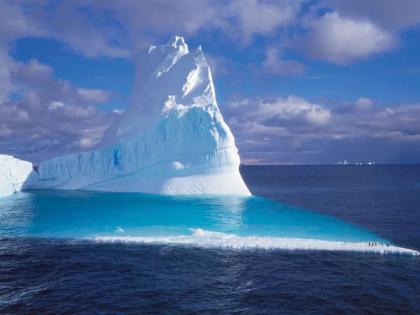Why Antarctica’s Giant Iceberg A23a Stopped Moving After Drifting for Years?
By Lokmat English Desk | Updated: March 5, 2025 11:03 IST2025-03-05T11:01:08+5:302025-03-05T11:03:21+5:30
The world's largest iceberg, A23a, has caused global concern since breaking off from Antarctica in 2020. This enormous iceberg, ...

Why Antarctica’s Giant Iceberg A23a Stopped Moving After Drifting for Years?
The world's largest iceberg, A23a, has caused global concern since breaking off from Antarctica in 2020. This enormous iceberg, weighing one trillion tons, drifted towards the South Georgia Islands, raising fears of a collision. Such a collision could have harmed the food supply for penguins, seals, and other marine life.
However, scientists are now surprised because A23a has stopped moving. As of March 1st, it is stationary, 73 kilometers from the South Georgia Glacier. According to Andrew Meyers of the British Antarctic Survey (BAS), if it stays put, it no longer directly threatens the island's ecosystem.
Also Read: Trump thanks Pakistan for extraditing wanted terrorist to US
A significant event occurred in January when a 19-kilometer section of A23a broke off. Ocean currents and warmer temperatures caused melting, changing the iceberg's size and stability.
Interestingly, if A23a stays where it is, the melting ice will release nutrients into the water. This could actually benefit local wildlife like penguins and seals. This area is home to about 5 million seals and 65 million birds, and scientists think this could improve their habitat.
The movements and melting of A23a are part of a larger climate crisis. Since 2000, about 6 trillion tons of ice have melted due to rising global temperatures. Scientists warn that if the Earth warms by 1.5 to 2 degrees Celsius, sea levels could rise irreversibly, leading to catastrophic consequences. Coastal cities, including Mumbai, are at risk of being submerged by the end of this century, creating a major crisis for India and many other countries.
Open in app